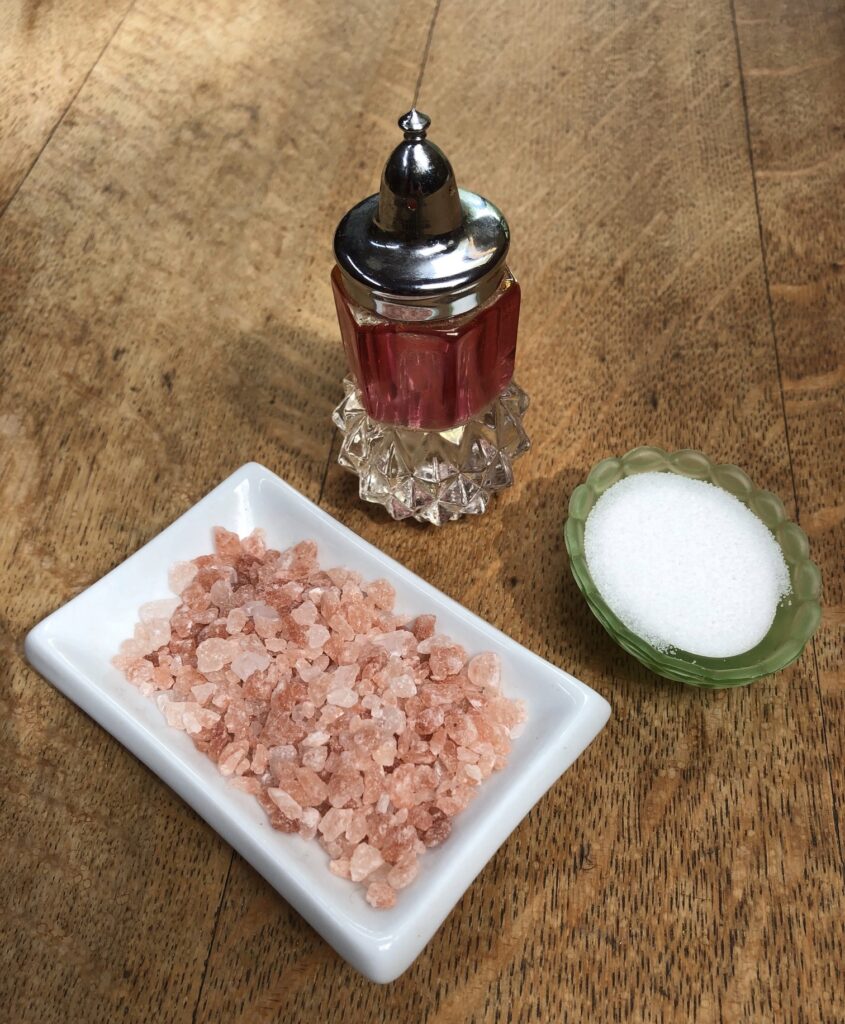After reading this you may never view common table salt in quite the same humble way again.
by Victor Wishalla
 Our body needs only a minimal amount of salt. Too much and too little of it can cause problems. Studies link excessive salt intake to health conditions including high blood pressure. But not enough has been said about the effects of too little salt and the quality of the salt that we ingest.
Our body needs only a minimal amount of salt. Too much and too little of it can cause problems. Studies link excessive salt intake to health conditions including high blood pressure. But not enough has been said about the effects of too little salt and the quality of the salt that we ingest.
Do you sometimes have a craving for salt? That may mean you are deficient in trace minerals supplied by natural salt, or dehydrated, or both. Salt attracts and binds water molecules.Recent research also indicates that the kind of salt we put into our bodies could be an overlooked factor in our quest for wellness.
Perhaps the common notion is that all salt on Earth comes from the sea and is therefore equal. However, research refutes this. Reportedly, fish from the ocean placed in a container with salt water made with ‘refined’ salt did not survive. Why is that?
We may have become accustomed to thinking of these whitish granules as something to merely sprinkle into our food to make it taste better. But, there is more to it than that. In times past, salt was coveted more than gold and wars were fought over it. Men knew it could mean life and death – though not in the sense we now know. They knew then that besides simply making food taste better, salt also helped to preserve food. Ancient Romans realized that controlling salt supply to the general population was like having power over life and death.
Indeed, salt is a vital substance for all life forms. To humans, it helps to regulate the balance of essential fluids and enables our brain and nervous system to function by supplying electrolytes. Humans have been aware of the role of salt in healing and detoxifying since antiquity, but if we drink salt-water only, we perish, as in the case of shipwrecked sailors who have nothing else to drink. Among those living close to the sea, for example native Hawaiian islanders, it is not unheard of to, once in a while, ingest small quantities of sea-water – chased with generous helpings of fresh water. They believe this practice aids detoxifying, revitalizing and re-mineralizing of the body.
Thalasso (Greek for ‘Sea’) Therapy is a popular offering in spas. Treatments come in the form of salt scrubs, baths, inhalation, packs and wraps. Thalassotherapy has been in use since the days of Hippocrates, the acknowledged Father of Medicine. Apparently, he had noticed that eating salty food affects basic body functions. He used sea-water for a variety of healing purposes, both internally and externally, some 2000 years ago.
Some people use salt for detoxifying at home. The so-called ‘brine shirt’ is an example. It works like this: a person lies in bed for about an hour wearing a cotton shirt that has been dipped in a mild salt solution (natural unrefined and unprocessed salt mixed with water. This induces sweating, which helps to bring out toxins. It is said to be effective in relieving flu and fever, and is said to activate one’s metabolism.
From India’s ancient Ayurveda healing system, we have the practice of Jalan Neti. This is basically flushing both nasal passages with a mild and diluted salt solution. A container resembling a small tea pot with a long spout is used to aid this procedure.
People with certain health challenges, including chronic ailments like psoriasis, have been flocking to the Dead Sea. Bordering Jordan to the east, and Israel to the west, the Dead Sea is a natural body of water said to have the highest salt content on Earth.
Some European doctors have been referring patients with chronic conditions such as lung ailments to salt caverns in the Alps, like those near Berchtesgaden, Germany, Poland, Ukraine and other locations. Healing salt caves of Germany.
Natural salt acts like an ionizer that attracts impurities. Some people are illuminating their homes or living rooms with the soft glow of lamps made from rose colored, hollowed out natural salt rocks taken from faraway places such as the Himalayas. (Some believe this area to be the seventh Chakra of the Earth, endowed with special healing powers).
Historians tell us that at least since early Roman days up till the Middle Ages, salt was a highly valued trade item transported on ‘salt roads’. Some of them exist to this day in Europe, Turkey and the Sahara desert. Salt was transported from salt flats in the interior to the coasts on camel trains up to 1,000 animals long.
Cities like Salzburg – which means ‘saltfortress’ in English – in Austria – got their name from salt. According to historical records, Roman legionnaires were partially paid with salt. Etymologists say the English term ‘salary’ appears to derive from Latin salarium, denoting a connection to salt. So too is the expression “(not) worth her/his salt.”
Saturate Water with Salt and you get Sole (‘so-lay’)
When water meets salt, both surrender part of their ‘identity’, giving birth to a mysterious new dimension… sole. Sea water is, in fact, sole, a natural water and salt solution.
Researchers, like controversial biophysicist Peter Ferreira, find that the nutritional power of sole is influenced by its water and salt quality, where the salt comes from and how it was obtained and processed. To make a good quality sole, Ferreira and German holistic physician, Dr. Barbara Hendel, who co-authored the bestseller “Water and Salt – The Essence of Life” recommend using natural salt rocks mined by hand, preferably from underground deposits in our planet’s few remaining pristine areas less affected by pollution, like the Himalayas. More about pink salt from the Himalayas
Wellness aficionados have used the mysterious liquid, sole, in different ways. For instance, they have:
1. Put a piece of natural salt rock (approx. one inch in diameter) into a glass with pure spring water. Let it sit for at least 2 hours. This saturates the water with 26% salt, same as sea water. After two hours, your entire salt rock may be dissolved. If any remains, remove, dry and save it for the next batch. Leaving it longer is not beneficial as the solution reaches saturation at 26% and will not absorb more salt after that.
As a detox and remineralization maintenance dose for adults, Dr. Hendel recommends that one takes a teaspoon of the sole, allows it to dissolve in a glass of water (preferably artesian spring water) then stirs and drinks it on an empty stomach, first thing in the morning.
She stresses the importance of drinking at least two litres of water during the day to help flush out toxins which sole helps to dislodge. For those with certain health issues, such as hypertension, this remedy may not be appropriate, they should check with their health care provider first.
Dr Hendel also says brushing teeth with sole regularly can help to keep gums and teeth healthy. Some rinse their mouth with sole and gargle with it to relieve throat infections. Others apply it to minor skin irritations, cuts or wounds. After all, sole is a natural antiseptic.
And of course, sole can be used for cooking as well, as an alternative to the usual commercial-processed kitchen salt.
Next time you pick up that salt shaker on your dining table, don’t be surprised if you look at its contents in a totally different light.
~ ~ ~ ~ ~
Dividing his time between Europe and Asia, Victor Wishalla is a veteran award-winning freelance producer and writer. He has contributed to conventional and new media in English and German.
A bi-lingual business coach and publicity consultant, Victor has been passionate about travel and wellness all his adult life. When not busy helping visionaries to manifest their wellness related projects, he likes to enjoy the outdoors, explore ancient sacred sites of power and beauty, trek, bike and sail. Victors interests include meditation and Yoga, plant based nutrition, filmmaking, Eastern philosophy and the study of happiness. He can be reached via travelnewstv@protonmail.com




